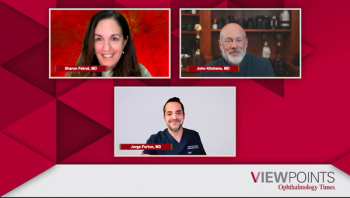
Ocular findings reported in case of siblings with LCA
Case study of 2 sisters with Leber’s congenital amaurosis (LCA) analyzes ocular findings, connection.
Mahmoud Kesba, MD, an ophthalmology resident, Asr Alainy Medical School, Cairo University, Faculty of Medicine, Cairo, Egypt, reported the case of 2 sisters with Leber’s congenital amaurosis (LCA).
The siblings were 9 and 5 years of age from a consanguineous family. They had been diagnosed with early-onset LCA. The family history included an aunt and grandmother who also had the disease.
Dr. Kesba and Valvita Reçi, PhD, reported that the children underwent a detailed ophthalmologic evaluation and family history. Electroretinography (ERG) and visual evoked potentials (VEPs) also were performed.
The findings of the evaluations showed that the visual acuity was 3/60; the girls had high hyperopia, nystagmus, and slow pupillary reaction to light.
They appeared to be physically relatively well developed. They sometimes tilted their heads to see and their communication response was delayed.
At 5 months of age, Dr. Kesba reported, the flash ERG showed moderately reduced scotopic responses; these were affected substantially more than the photopic responses.
The multifocal ERG showed generalized reduction of the functional visual fields in both eyes with preservation of the central peaks. The VEPs in both eyes showed mildly impaired retinocortical transmission.
“These findings indicated bilateral moderate dysfunction of the retinal pigment epithelium and the photoreceptors (rods>cones), bilateral moderate macular dysfunction, and bilateral mildly impaired retinocortical transmission,” he stated.
The investigators recommended genetic counseling for families and patients with LCA among their family members with the goal of decreasing the incidence of this disease.
They also advised that infants with LCA be followed closely with a diagnostic ERG.
Dr. Kesba reported this case at the American Society of Cataract and Refractive Surgery, July 23-27, 2021. He has no financial interest in this subject matter.
Newsletter
Don’t miss out—get Ophthalmology Times updates on the latest clinical advancements and expert interviews, straight to your inbox.







































